I wrote this article during the last week and took a punt that the semi-finals wouldn’t make a fool of me. Any changes made to selections are in italics.
There are 18 Tests before kick-off in France, and New Zealand are coming off an international season in 2021 that exposed some seriously glaring errors in selections, game plans and tactics.
Making this year’s selections even harder is the ever-increasing gap between the standard of Super Rugby and the international game, where the number of countries who are well coached, defensively coordinated and frankly, just outright quicker with more complete skill sets is on the rise.
Ireland will bring a side that exposed many of the All Blacks’ frailties in Dublin last year, so now is the time to ditch the continuity approach they have run since the coaching handover, choose selections and game plans that respect the opposition, and frankly make some seriously tough calls on personnel that have been below par post the last Rugby World Cup.
Here are a couple of observations up front.
Now is the time to attach three players as apprentices, like we do on off-shore tours. Those proposed could be pressing for squad selection in 2023, but their body of work won’t make this full squad based on impact and the claims of others.
If there is a time to make the investment in a wider squad, it is during a home series.
Folau Fakatava, Roger Tuivasa-Sheck and AJ Lam are my selections. AJ Lam might look like a bolter call, but he’s quick, good in the air and an impact player.
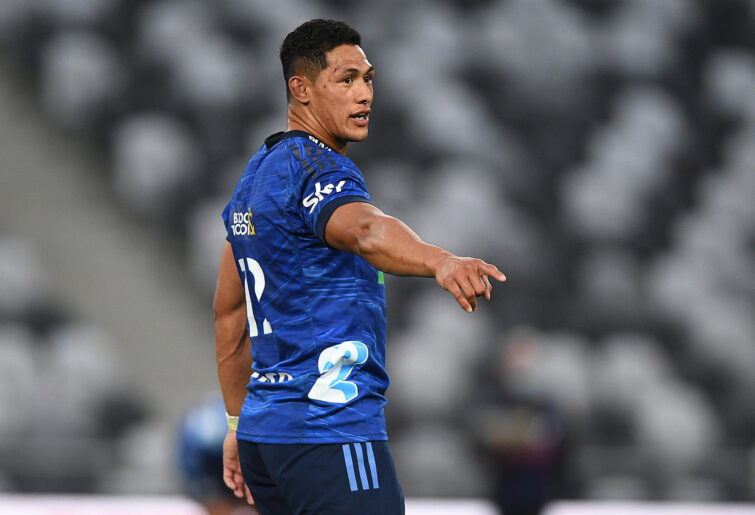
(Photo by Joe Allison/Getty Images)
He just doesn’t get enough minutes at the Blues so I suggest a move to the Highlanders to ensure he gets more game time.
Lam confirmed his worth in the semi. Tuivasa-Sheck proved the apprentice bench is the place for him too.
I notice an interesting dynamic in the New Zealand rugby media and public around the All Blacks at the moment.
Many (most) are happy to criticise coach Ian Foster, but when suggestions are made about repairing the obvious weakness areas, where many of our more popular x-factor (shudder) players reside, the howls of protest go up.
It’s a rather circular and amusing argument when it really is time to bite the bullet. Many of the first Test selection 23s currently doing the rounds address nothing from last year’s efforts.
This is my starting XV, bench and squad players for Ireland series.
Loosehead prop
Ethan de Groot (1), Adin Ross (17), Alex Hodgman (squad)
Hooker
Samisoni Taukei’aho (2), Dane Coles (16), Codie Taylor (squad)
Tighthead prop
Owen Franks (3), Angus Ta’avao (18), Ofa Tu’ungafasi (squad)
Notable omissions
George Bower, Nepo Laulala, Oli Jager, Kurt Eklund, Joe Moody (injured)
I am so tempted to swap the Blues’ tightheads, but there was that Tu’ungafasi charge down.
The only real tough call for me here was the third tighthead. Tu’ungafasi was my bench selection until he got seriously de Groot-ed in the quarter-final. It’s not currently a New Zealand position of real strength.
I suspect there is a real opportunity to go after this Ireland scrum and a fast start with pressure at set-piece time will go some way to knocking this Ireland side off its axis early.
There are two disruptive looseheads to link with a very strong starting hooker. Franks will provide the needed stability at tighthead. Taylor’s wobbly throwing counts him out of Test 1.
Locks
Brodie Retallick (4), Scott Barrett (5), Tom Robinson (19), Josh Lord and Sam Whitelock (squad)
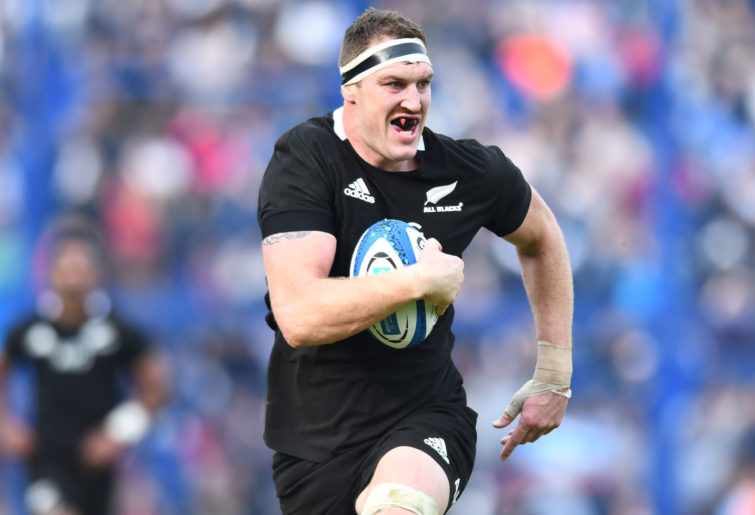
(Photo by Amilcar Orfali/Getty Images)
Big Retallick is doing some sort of reverse Jenny Craig thing with the weight regained post Japan. His hitting and carrying of old are returning. Robinson on the bench might look like a left-field call but this is not a big Irish side coming to visit.
My starting pack seriously outweighs the Irish. They will lose little at lineout time when he replaces Barrett but the energy at tackle, maul and breakdown time will be a big step up.
A massive semi-final game by Scott Barrett gets him back in the team, boosted by the injury to Whitelock, when I had originally called time on him.
It was a tough call on James Tucker being swapped out for Barrett, not only on form but also because he looks like he might belt you in the tunnel or carpark as well as the next ruck.
Notable omissions
James Tucker, Tupou Vaa’i and Josh Dickson
Loose forwards
Cullen Grace (8), Sam Cane (7), Luke Jacobson (6), Ardie Savea (20), Shannon Frizell and Hoskins Sotutu (squad)
This is New Zealand’s traditional strength and it was nothing short of an unbalanced, full-on disaster last season.
At the time of writing, Ethan Blackadder is out for the year and there is no confirmation on Dalton Papalii, but he wouldn’t alter my starting 23.
Where do you start assessing the 2021 All Blacks’ loose-forward effort, other than wiping the board clean, admitting the mistakes, and starting again with a specific focus on what is required to beat Ireland.
What should be scaring the bejesus out of every New Zealand rugby fan is the Ireland trio is strong in almost every area where the All Blacks were not last year.
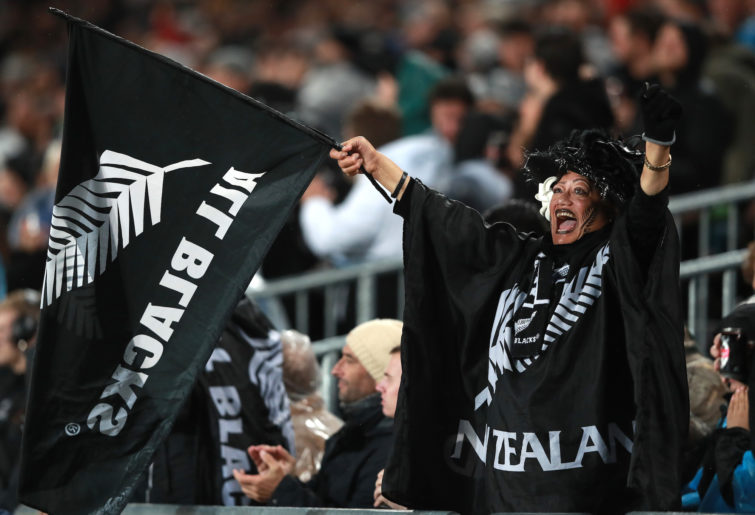
(Photo by Hannah Peters/Getty Images)
In picking two wide-ranging loose forwards we left the tight five and remaining loosie to do battle with the opposition pack in the middle of the park and on the ground.
It left NZ with gaping holes in ruck defence, poor breakdown presence, few turnovers won, low loose-forward tackle numbers and it destroyed the lineout as South Africa showed with some comfort.
The coaching team did make changes on the end-of-year tour to adjust after the South Africa games, but it wasn’t a total fix.
Ireland and Leinster are the world masters in producing lightning-quick ball. They can retain it for long periods, and with Jamison Gibson-Park directing the show, they get their ball carriers across the gain line quickly.
New Zealand’s 2022 selections must address these areas.
Sam Cane is our best breakdown exponent by some distance, both offensively and defensively. He makes his tackles out in front of the gain line and is forever present in that defensive A or B slot. His return is a massive step up from last year. He is also the best hunter of opposition nines and tens in New Zealand.
From being an issue, number eight and blindside now look like an emerging area of strength if the fortitude for change is there.
With Frizell being short of minutes and Blackadder and Papalii down, I have gone with starting Cullen Grace at the back.
He does all the donkey work, carrying off his own line for the Crusaders. That was another All Blacks issue in 2021. He contributes to a big breakdown and tackle count and is a superb lineout exponent who can jump in the middle if required.
The competition for the six and eight shirts will be intense, but they must have a high work rate and be physical.
The Crusaders-Chiefs semi-final showed the advantage of having a number eight you can throw in the middle of the lineout when you are under the pump.
Blackadder would have been a lock-in at six if fit, but Jacobson had a huge game against South Africa last year and then surprisingly was given few other chances.
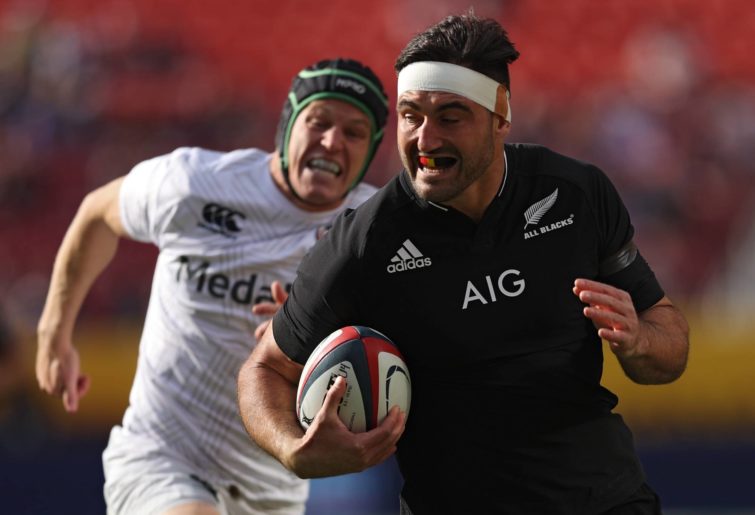
(Photo by Patrick Smith/Getty Images)
But this domestic season has kept those workload and physicality attributes at the highest level and he is next man up.
Many will consider the benching of Ardie Savea to be something akin to blasphemy, but old T-table accounting shows why.
What we lose with not playing a traditional eight versus what we gain offensively with playing Savea there just simply doesn’t add up and makes the trio too difficult to balance.
In selecting Cullen Grace, we bring in more areas of game contribution plus more size.
This is simple portfolio management. Start the toughest blokes you have, go hard at the breakdown and the collision zone, disrupt Ireland as much as possible, with impact coming off the pine.
If New Zealand don’t plan to stop Ireland at the gain line and just think about how they want to play, expect the same outcomes as in Dublin.
Notable omissions
Marino Mikaele-Tu’u and Peta Gus Sowakula
To be frank, you can throw a blanket over these two and Sotutu form wise. There is nothing in it. Sotutu gets my vote based on prior Test squad experience only, but he still has to prove his physicality at the next level to stay here until the World Cup.
There were too many errors from Sowakula on the big stage on Friday night for my liking. Sotutu had some good big moments.
Halfbacks
Aaron Smith (9), Finlay Christie (21), Brad Weber (squad)
That’s right, I am putting three of these yappy little fellas in the wider squad for the July series.
As much as the bigger blokes in the single-digit shirts will hate to admit it, the change in ruck-law focus means this is now the single most important position on the park.
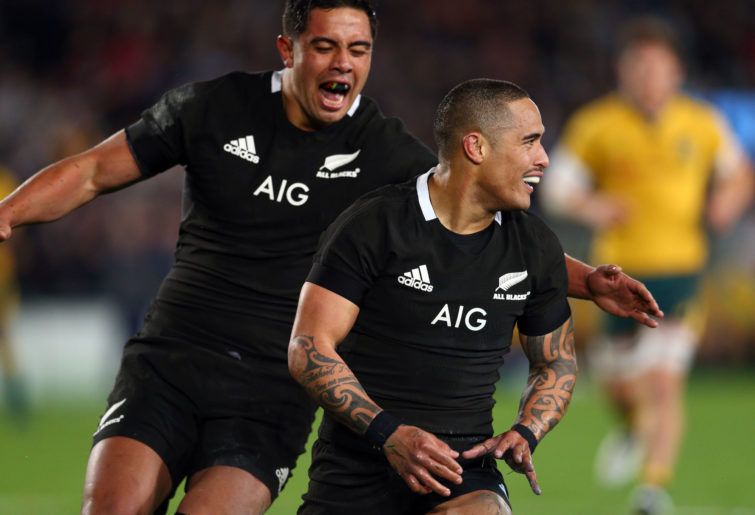
(Photo by Renee McKay/Getty Images)
France and Ireland are showing the benefit of a dominant, rapid halfback, while England who do not have one have suffered by comparison.
Notable omission
TJ Peranara – it’s just time, isn’t it?
Standoff
Richie Mo’unga (10), Beauden Barrett (22), Stephen Perofeta (squad)
The selection at ten will be game-plan dependent. For mine, I want the control and long kicking game of Richie Mo’unga when playing against Ireland and South Africa.
Pinning the Irish back, keeping the turnover errors down and having a greater variability in the game plan are important qualities.
While the All Blacks showed versus France (albeit for 25 minutes) that they can keep the ball and attack in effective, narrow fashion, ball retention hasn’t been a great strength, so making Ireland play from deep will be a critical aspect.
Barrett continues to display his rapier-like best, in bursts by his own admission, and being able to bring him on late in a game is a real plus.
If you need any further confirmation of the difference in the two premier tens, Mo’unga plays like a flyhalf, while Barrett plays like a fullback.
Perofeta is this year’s good news story.
Notable omission
Bryn Gatland
Midfield
Quinn Tupaea (12), Jack Goodhue (13), David Havili and Thomas Umaga-Jensen (squad)
There are lots of midfielders of similar size so with Umaga-Jensen being in form. And his 107-kilogram frame gets him a spot should a ram raider be required later his year.
This All Blacks side is screaming out for solidity, defensive ownership and organisation, so Jack Goodhue – who has a month to get that full match fitness up – must start.
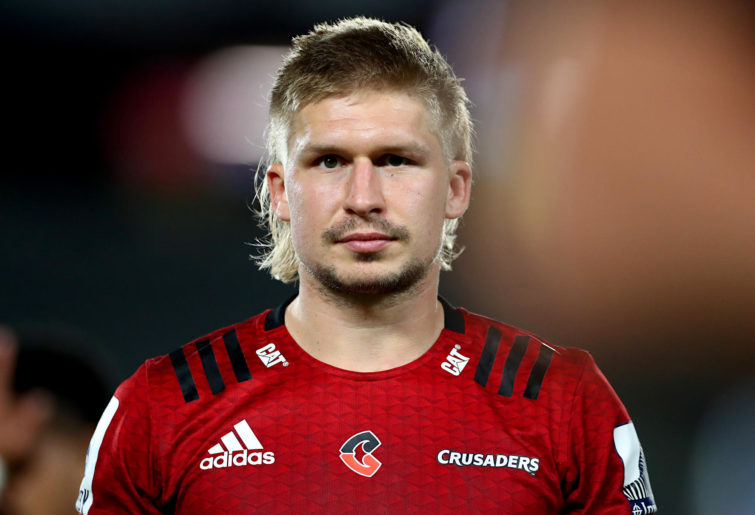
(Photo by Hannah Peters/Getty Images)
The number of head-on tackles he makes each week evidences his game reading and the responsibility he willingly takes makes him the only option here until Anton Lienert-Brown regains fitness.
Ireland launch so much of their attack off the space in behind their own 12 that having a quality defensive-read player in midfield is a must have.
Tupaea has all the traits required to be a quality international 12 and is bang on form at just the right time.
The Fijian captain and centre Levani Botia won four turnovers on the ground against New Zealand last season. Both these centres are good at ruck time and are good offensive clearers.
What a game it was for the selections in the semi-final. Tupaea was a consistent handful and never went quiet, Goodhue was impeccable and Havili played that floating role brilliantly. He was brave too.
There is value in having centres who can work on the ground, and that was clear for all to see.
While the howls will go up from north of the Bombays for not considering Rieko Ioane, this simply ignores the recent Test match outcomes.
Subdued attacking efforts against South Africa and Ireland confirm he is best placed at international level back on the flank, while his tackle effectiveness against France was literally non-existent.
In the last three big games at centre in 2021, there were three sub-par performances. Further selection at centre invites repetition.
Back three
Rieko Ioane (11), Will Jordan (14), Jordie Barrett (15), Leicester Fainga’anuku (23), Sevu Reece (squad)
There is a real chance for this trio to be a serious differentiator against Ireland. This back three will alter how teams play against them.

(Photo by Chris Hyde/Getty Images)
Barrett and Jordan have length in their kicking games. They are all big guys under the high ball. They produce lightning-quick ball out wide, and all can hurt the opposition running back poor clearances.
This looks as complete a back three as there is going around at International level.
On the rare occasions New Zealand got the ball back in Dublin last year, attacking the wider edges did bring results.
The Ireland back three is not the basis for a social basketball team, so the All Blacks will have a real height advantage, raining bombs down with these three at their end with these three chasers will be a key part of the game armoury.
Notable omissions
Caleb Clarke – until he can get his tackle percentage up above Marty Banks’, it’s just not worth the risk at Test level, a rugby ball still has two sides.
His record at Test level is hardly compelling enough to take the punt on a guy out with hamstring issues.
While Joe Schmidt won’t join the coaching team until after this Ireland series, I am hoping that his pragmatism, insistence on the fullness of skills sets and attention to detail will already be enough to for this coaching team to ditch the cavalier attitude of hope over probability of recent years and that the tough decisions are made to improve the deficiencies that evident in 2021.
The Bulls of South Africa add their names to the list of how to play against Ireland and Leinster. New Zealand ignore the lessons at their peril.




































































































